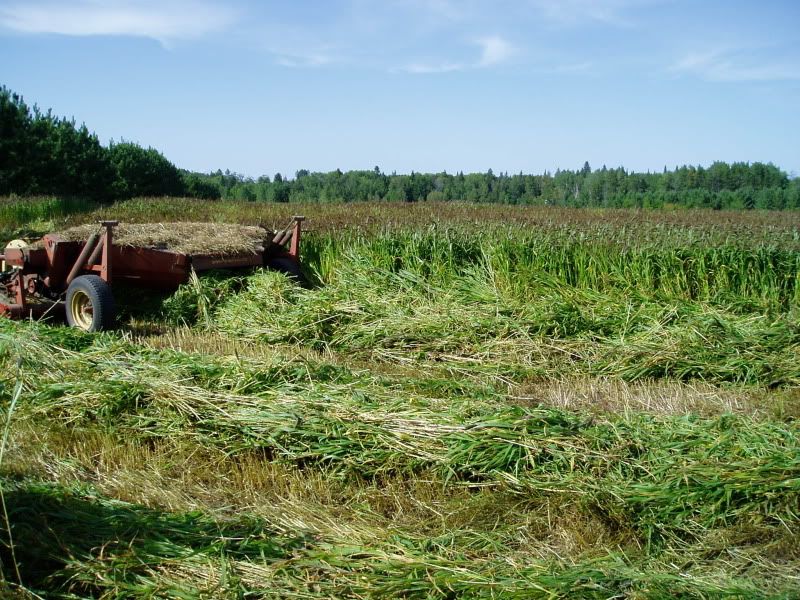I have been hearing that story about pheasant not surviving in southeast Kansas because of mineral calcium, humidity, heat and too much rain for 40 years. Pheasants can definitely survive and reproduce in S. E. Kansas, S.E. Missouri, S.E. Texas and in Tennessee.
I will give you a number of good examples to demonstrate this fact. First of all, I have seen full grown and young wild pheasants in the deep S. E. Texas (coastal prairie rice field country) warm and humid in the summer time. I have flushed wild pheasants in central California, in July on hot (95 degree) day. Google: Mexicali Pheasants. Those are California pheasants that have expanded their range into Mexico.
The pheasants first brought to the America (to Oregon) in 1881 by Owen Denny, came from Shanghai, China (wild pheasants are everywhere in that area). Shanghai is near the 30 parallel, that's about the same as Houston, Texas and Jacksonville, Florida warm and humid in summer with little snow in winter.
Truly Wild pheasants are expanding their range into S.E. Kansas but at a very, very slow rate. Let me explain.
I have been keeping up with the slow expansion of the North American pheasant range for the last 44 years. In the the last 40 years ( with the help of man and wilder strains of the True Pheasant - Ring-neck type) the wild pheasant range have expanded in New Mexico, Texas and Oklahoma. In New Mexico wild pheasants are seen all along the entire rough and tough Rio Grande river. Google: Bosque Del Apache pheasant, note the white-winged or Bianchi's pheasant (subspecie of the ring neck) extreme wild and wary of predators, that have crossed with the gray-rump or blue back ring neck pheasants to produce a much wilder and predator alert pheasant for that river bottom area, which is loaded with ground and aerial predators.
In Oklahoma, in the late 60's the northern edge of the wild pheasant range did not extend much farther south of Enid, now 40 years later wild reproducing pheasants are seen as far south as Kingfisher and around Sweetwater.
In Texas, wild pheasants have expanded their panhandle range southward to the Lubbock area. The panhandle pheasants expanded with the help of man and wilder strains of the true pheasant, see article below:
http://www.amarillo.com/stories/120201/whe_legionsofspo.shtml
Whats wrong with having both wild quail and wild pheasants in every county in Kansas? Its not impossible, but it may take another 40 or 50 years to happen.
In 1968 and 1969 I was stationed at Fort Riley, Kansas with the 24 Infantry Division. That was over 40 years ago, we frequently flushed quail, prairie chickens and pheasants all over that area. Back then wild turkeys, at Ft. Riley, were rare, very few. I know now 2010, the the turkey population at Riley has exploded. And the status of the other three game birds have remained the same over the last 40 years, this is very important. This is important because it shows that predators play a big roll in the progress of a game bird specie. Predators mostly take down young turkeys because of their smaller size. Full grown adult turkeys (because of their large size are harder to take down by a Cooper's hawk, Red-Tailed hawk, bobcat, coyote etc...) survive longer and reproduce longer than the quail or pheasants.
Main point, the biggest limiting factor in the S.E. Kansas expansion of the pheasant range is not trees or minerals (Riley county probably has the same mineral and trees as Anderson county) its PREDATORS.
But truly wild pheasants are slowly expanding eastward (slowly the wise old hens will figure out ways to hide the nest and get away from predators this is a very slow process) example, I have a good friend who is a wildlife photographer that is now frequently seeing wild pheasants around Dexter, Kansas they were rare in that area 20 or 30 years ago. Wild pheasant are frequently seen around E. Kansas areas of Yates Center, Leroy, Richmond, LaCygne and Cambridge. I am sure there are other areas.
There are wild pheasant in S.E. Missouri, in the booth hill area and in east central Tennessee.
If 1000 wild trapped pheasants (60 or 70 generations of wild genes that know how to escape predators) from western or north central Kansas were released in the spring time in Anderson county it would speed up the eastward expansion process.


